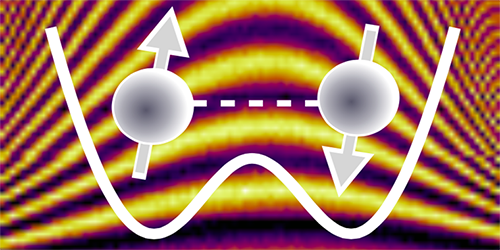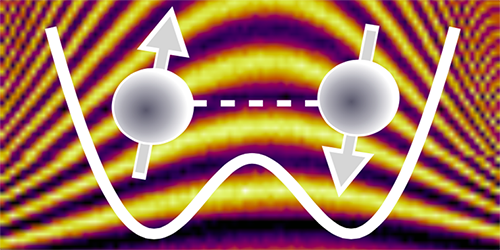Even-Handed Control of Quantum Dot Qubits
Quantum dots can act as qubits, with quantum information stored in the spin states of confined electrons. This information can be manipulated using the so-called exchange interaction, which can unfortunately introduce noise. Two research groups have independently developed a “symmetric” method of controlling exchange that is less susceptible to noise than previous methods.
Quantum dots can be controlled in various ways, but the exchange interaction is attractive because it is fast, spatially localized, and electrically controllable. In certain setups, this nonclassical interaction can couple together two (or three) neighboring dots, which perform as a single qubit. Researchers have typically controlled exchange by asymmetrically lowering the potential well of one dot relative to the other dot. The problem with this so-called “detuning” is that it is very sensitive to fluctuations in the potential barrier and control voltages.
One way to reduce this noise sensitivity is to manipulate the exchange interaction by symmetrically lowering the potential barrier that separates the dots without altering the relative depth of the wells. Ferdinand Kuemmeth from the University of Copenhagen, Denmark, and his colleagues applied this method to a gallium-arsenide double quantum dot. Likewise, Matthew Reed and colleagues from HRL Laboratories in Malibu, California, performed symmetric operations on a triple-dot device made of silicon. Both teams observed coherent coupling between dots, as evidenced by oscillations of the quantum spin state as a function of time. The number of oscillations was greater for the symmetric method than for detuning, demonstrating that symmetric operation reduces the detrimental effects of noise by a factor of 5 or more.
This research is published in Physical Review Letters.
–Michael Schirber





